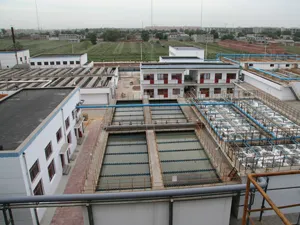Strategies for PFAS Removal from Water A Comprehensive Overview
The widespread contamination of water sources by per- and polyfluoroalkyl substances (PFAS) has emerged as a critical environmental and public health issue. Known as forever chemicals, PFAS are a group of synthetic compounds that are resistant to both environmental degradation and biological breakdown, leading to their persistence in the environment. These substances have been used in various industrial applications and consumer products, such as non-stick cookware, water-repellent fabrics, and firefighting foams. The ubiquity of PFAS in the water supply has necessitated the development of effective removal techniques to safeguard human health and the ecosystem.
Understanding PFAS Contamination
PFAS are a class of over 4,000 chemicals, characterized by a carbon-fluorine bond, which is one of the strongest bonds in chemistry. This bond makes PFAS extremely stable and resistant to decomposition. As a result, they can accumulate in the environment and in living organisms, leading to potential health risks, including immune system disruption, developmental issues, and increased cancer risk. The contamination of water supplies with PFAS often occurs through industrial runoff, wastewater discharge, and the application of contaminated biosolids in agriculture.
PFAS Removal Techniques
To address PFAS contamination, several removal technologies have been developed, with varying degrees of effectiveness. Here are some of the most promising methods
1. Activated Carbon Filtration Activated carbon is widely used for water treatment due to its porous structure and large surface area, which facilitates adsorption. When water passes through a column of activated carbon, PFAS molecules can adhere to the carbon particles, thereby reducing their concentration in the treated water. However, the effectiveness of this method can vary depending on the specific type of PFAS and the presence of competing contaminants.
2. Ion Exchange Resins Ion exchange processes utilize specialized resins that can attract and bind PFAS ions, effectively removing them from water. This method has shown promise in treating water with high PFAS concentrations. However, it can be costly, and the spent resins must be disposed of properly, as they may still contain concentrated PFAS.
3. Reverse Osmosis This advanced filtration technique employs a semi-permeable membrane to separate contaminants from water. Reverse osmosis is effective at removing many types of PFAS, though it requires significant energy and can produce concentrated waste that must be treated separately.
pfas removal from water

4. Advanced Oxidation Processes (AOPs) AOPs utilize powerful oxidants, often in combination with ultraviolet (UV) light, to break down PFAS in water. These processes are capable of mineralizing PFAS, resulting in the complete destruction of the chemicals instead of merely transferring them to another medium. While AOPs show great potential, they are still being researched for their practical applications and economic viability.
5. Thermal Treatment High-temperature incineration can break down PFAS into harmless byproducts. This method is effective but typically requires specialized facilities that can handle the extreme temperatures needed to destroy these persistent chemicals.
Regulatory and Remedial Approaches
In tandem with these technical solutions, governments and regulatory bodies have begun to implement stricter standards for PFAS in drinking water. In the United States, the Environmental Protection Agency (EPA) has set maximum contaminant levels for certain PFAS compounds and has initiated programs to monitor and remediate contaminated sites. Communities are encouraged to invest in water treatment infrastructure and technology to mitigate exposure risks.
Future Directions
Research into PFAS removal is ongoing, with scientists exploring innovative technologies and approaches to enhance the effectiveness and cost-efficiency of removal methods. Additionally, there is a strong focus on the development of biodegradable alternatives to PFAS, which can offer the functional benefits without the associated environmental risks.
Conclusion
The removal of PFAS from water is a multifaceted challenge that requires a combination of advanced technologies, regulatory measures, and community engagement. As awareness of the health impacts of PFAS continues to grow, the urgency to implement effective removal strategies becomes even more paramount. It is crucial for stakeholders, including governments, industries, and the public, to work together to ensure safe and clean drinking water for all.

